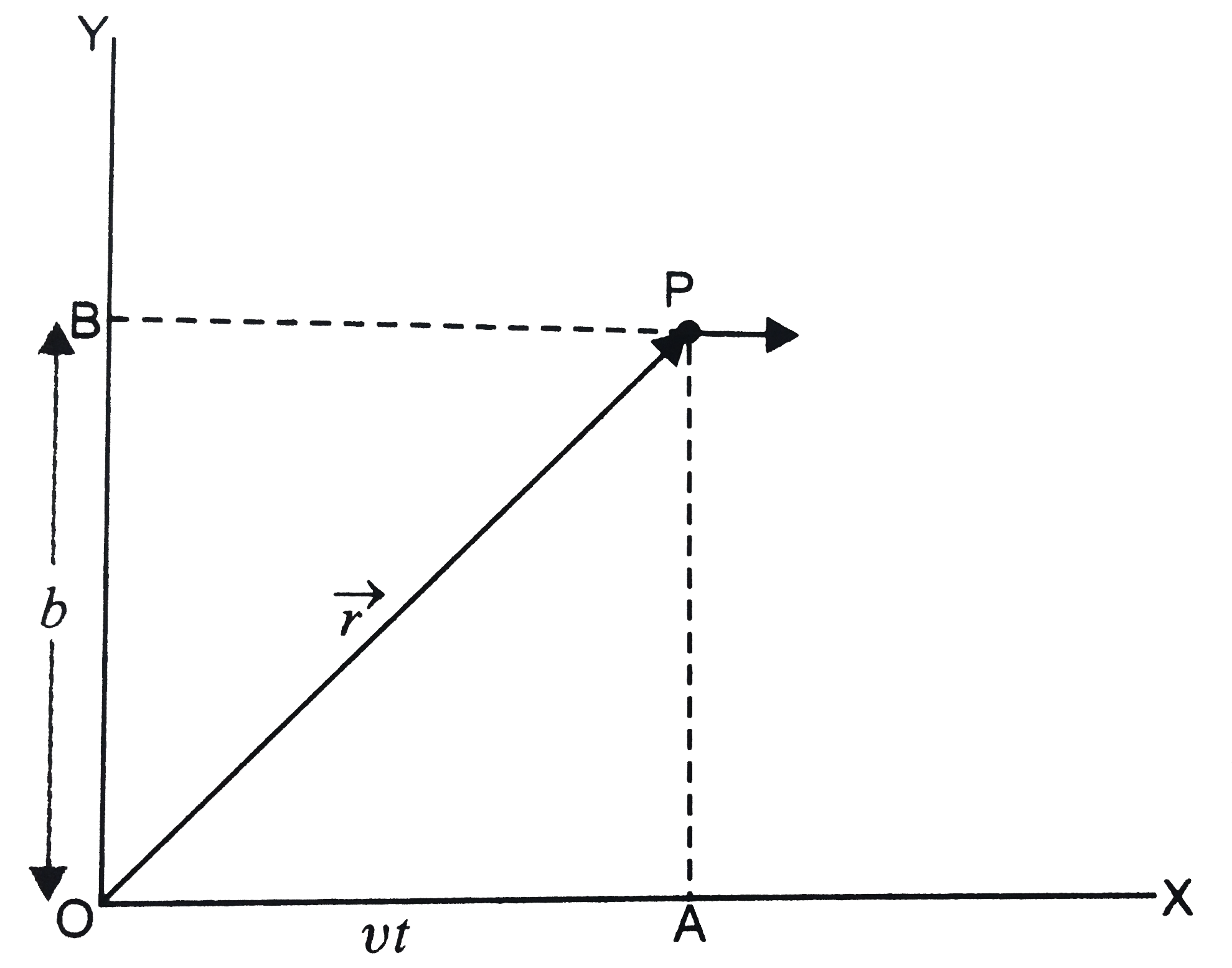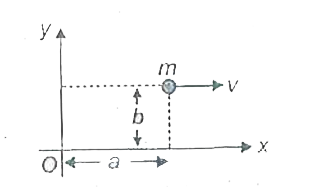A particle is moving along a stright line parallel to x-axis with constant velocity. Does its angular momentum about the origin decrease with time or increase with time or remain constant ?
Suppose a particle of mass m is moving II to X-axis starting from B, where OB=b, Fig. At any time t, let the particle be at P,
where x=OA=BP=vt,y=b,z=0.
Components of velocity are

vx=dxdt=v,vy=dydt=0,vZ=0
As →L=→r×→P=→r×m→v=m(→r×→v)
=m∣∣
∣
∣∣ˆiˆjˆkvtb0v00∣∣
∣
∣∣
i.e. angular momentum has magnitude mvb and is directed along negative z-axis. Thus angular momentum remains constant.
Topper's Solved these Questions
- BOOK - PRADEEPCHAPTER - SYSTEMS OF PARTICLES AND ROTATIONAL MOTIONEXERCISE - CONCEPTUAL PROBLEMS II.2videos
SYSTEMS OF PARTICLES AND ROTATIONAL MOTION
- BOOK - PRADEEPCHAPTER - SYSTEMS OF PARTICLES AND ROTATIONAL MOTIONEXERCISE - VERY SHORT ANSWER QUESTIONS I.2videos
SYSTEMS OF PARTICLES AND ROTATIONAL MOTION
- BOOK - PRADEEPCHAPTER - SYSTEMS OF PARTICLES AND ROTATIONAL MOTIONEXERCISE - CONCEPTUAL PROBLEMS I.2videos
SYSTEMS OF PARTICLES AND ROTATIONAL MOTION
- BOOK - PRADEEPCHAPTER - RAY OPTICSEXERCISE - Problem For Practice(a)25videos
RAY OPTICS
- BOOK - PRADEEPCHAPTER - THERMODYNAMICSEXERCISE - Assertion- Reason Type Questions19videos
THERMODYNAMICS
Similar Questions
Knowledge Check
- Question 1 - Select One
A particle is moving along a straight line parallel to x-axis with constant velocity. Its angular momentum about the origin
Adecreases with timeBincreases with timeCremains constantDis zero - Question 2 - Select One
A particle of mass m is moving on the XY-plane along a straight line y = d, with constant velocity v. Its angular momentum about the origin
Ais zeroBremains constanCincreases with timeDmay increase or decrease depending on direction of motion of particle. - Question 3 - Select One
A particle is moving along a straight line with increasing speed. Its angular momentum about a fixed point on this line :
AGoes on increasingBGoes on decreasingCMay be increasing or decreasing depending on direction of motionDRemains zero
A particle moves with a constant velocity parallel to the X-axis. Its angular momentum with respect to the origin
View SolutionA particle performs uniform circular velocity along a line parallel to the x-axis, away from the origin. Its angular momentum with respect to the origin.
View SolutionA particle of mass m is moving with constant velocity v parallel to the x-axis as shown in the figure. Its angular momentum about origin O is
 View Solution
View Solution
A particle mass parallel to x-axis with constant velocity v as shown in the figure. The angular velocity of the particle about the origin OView SolutionA mass M moving with a constant velocity parlale to the X-axis. Its angular momentum with respect to the origin
View Solution


